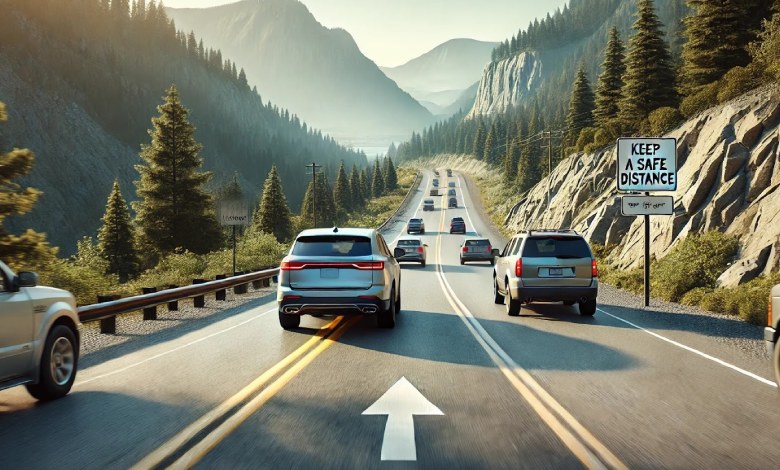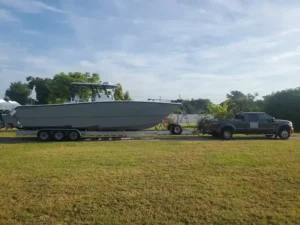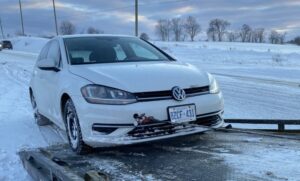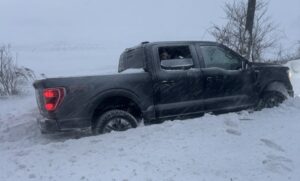The open road, especially one that winds and climbs through beautiful, challenging terrain, offers a unique driving experience. For a professional towing service like Pars Towing, which operates in Ontario and the Aurora area, mastering mountain road driving is not just about a scenic journey—it is a critical skill set that ensures the safety of our drivers, the integrity of our equipment, and the security of the light duty, heavy duty, medium duty, or motorcycle vehicle we are recovering or transporting. While Ontario may not be home to the towering peaks of the Rockies, it boasts numerous challenging, hilly regions—from the Niagara Escarpment to the challenging grades of the Canadian Shield—that demand the specialized knowledge of mountain road driving and towing expertise. Our commitment to accident assistance service and long distance towing means we must be prepared for the demands of these elevated and winding routes, ensuring every flatbed towing job, every winch-out, and every long haul is executed with absolute precision.
- Learn More >>>>>Drowsy Driving: Dangers and How To Avoid It
The Dynamics of Towing on Steep Grades
Driving on flat, straight highways is vastly different from navigating inclines and declines with a heavy load in tow. Gravity, the most formidable force in mountain road driving, is both a hindrance on the climb and a dangerous accelerator on the descent. Understanding this dynamic is the first step toward safe operation.

1. Conquering the Ascent
When driving uphill, the primary challenge is maintaining speed and preventing engine or transmission overheating. A tow truck, especially one engaged in heavy duty towing or hauling a medium duty vehicle, must work significantly harder against gravity.
- Gear Selection is Paramount: Before starting a steep climb, the driver must select a lower gear. Do not wait for the vehicle to lug or for the engine to struggle. Downshifting keeps the engine operating within its optimal power band, which is crucial for generating the necessary torque and reducing strain. Modern tow trucks with “Tow/Haul” modes should always have this feature engaged, as it adjusts the transmission’s shift points to provide more power and minimize excessive shifting.
- Monitor Engine Temperature: Towing uphill places enormous thermal stress on the engine and cooling system. A driver must constantly monitor the engine temperature gauge. If the needle creeps toward the red zone, the smart move is to pull over to a safe, level spot—if available—shut off the engine, and allow it to cool down completely. Pushing an overheating engine is a direct path to a catastrophic mechanical failure. Pars Towing’s commitment to reliable service means we prioritize equipment maintenance to minimize this risk, but situational awareness remains the driver’s ultimate tool.
- Maintain Steady Momentum: On long grades, a steady, measured pace is better than alternating between high-throttle bursts and deceleration. This consistent approach conserves energy and reduces stress on the driveline. If the speed must be low, the use of hazard lights alerts other traffic to the slow movement, a common and accepted practice in mountain road driving for commercial vehicles.
2. Mastering the Descent: The Brake Fade Hazard
The descent is arguably the most dangerous part of mountain road driving, as it introduces the significant risk of brake fade—a reduction in braking power caused by excessive heat. For a light duty towing or flatbed towing operation, brake failure on a steep grade is an emergency situation.
- Shift Down Before the Descent: Just as with the climb, gear selection is the key to a safe descent. The vehicle should be placed into a low gear before the wheels even crest the top of the hill. The gear chosen should be one in which the truck could safely climb the same grade. This technique, known as engine braking, uses the engine’s internal compression and friction to control speed, saving the service brakes for slowing down and stopping.
- The Snub Braking Technique: Never “ride” the service brakes by applying continuous, light pressure. This quickly generates heat and leads to brake fade. The correct method is snub braking:
- Determine a safe, controlled speed.
- Apply firm, steady pressure to the service brakes for about three seconds to reduce the speed by 5 to 10 mph below the desired controlled speed.
- Release the brakes completely to allow them to cool.
- Repeat this process only when the speed has increased back to the controlled threshold. This intermittent braking ensures the service brakes remain cool and fully functional for an emergency stop.
- Utilizing Engine Retarders: Many heavy duty and medium duty tow trucks are equipped with engine retarders (commonly called “Jake brakes”). These devices are invaluable in mountain road driving as they drastically increase the engine’s braking force, making the descent much safer and preserving the service brakes. Drivers must be trained to use them effectively, understanding the different settings and being aware of local noise ordinances, which sometimes restrict their use in populated areas.
- Learn More >>>>>Best Safety Tips For Driving In The Rain And Snow
Operational Safety and Road Awareness
Successful mountain road driving goes beyond mechanical technique; it relies on heightened situational awareness and proactive safety measures.
3. Navigating Curves, Switchbacks, and Narrow Passages
Mountain roads are rarely straight. They feature tight curves, sharp switchbacks, and can often narrow unexpectedly, demanding expert control, especially when maneuvering a long flatbed towing rig or a heavy recovery unit.
- Reduce Speed Aggressively: Enter all curves and turns at a significantly reduced, safe speed. Sudden steering corrections or braking while in a curve can induce dangerous trailer sway or, for heavy vehicles, risk a rollover. For Pars Towing, this means a professional, conservative approach is always preferred over speed.
- Track Wide on Turns: Towing a trailer or a salvaged vehicle on a flatbed requires drivers to account for the longer wheelbase and the trailer’s tendency to “cut the corner.” Taking a slightly wider entry allows the trailer’s wheels to track within the lane, avoiding shoulders, steep drop-offs, or oncoming traffic.
- Maintain Lane Discipline: In narrow, winding mountain roads, the centerline is an essential boundary. Drivers must remain cognizant of the overall width of their tow rig and any load, leaving a safe margin for oncoming vehicles, which may be struggling with their own mountain road driving challenges.
4. Preparing for Sudden Weather and Altitude Changes
Ontario’s geography often means rapid changes in local weather, which is amplified in hilly and elevated regions. Aurora, situated in the climatically diverse York Region, can experience sudden shifts that impact road conditions quickly.
- Be Ready for Ice and Fog: Higher altitudes and steep grades are magnets for fog, rain, and winter precipitation. These conditions demand an immediate reduction in speed, increased following distance, and the proper use of low-beam headlights. Even a thin layer of ice on a steep downhill can be uncontrollable without extreme caution.
- Altitude and Engine Performance: Thinner air at higher elevations can reduce an engine’s available power, a factor particularly relevant when an operator needs maximum torque for a difficult recovery or a heavy-duty tow. Drivers must anticipate this power loss on climbs and adjust their gear selection and speed expectations accordingly.
- Emergency Kit Essentials: A comprehensive emergency kit is non-negotiable for mountain road driving. Beyond standard first aid and warning triangles, a towing professional’s kit includes extra fluids, basic tools for minor roadside repairs, emergency communication devices (as cell service can be spotty), and traction aids like chains or sand for severe winter conditions.

- Learn More >>>>>5 Good Driving Habits That Save You Money
The Pars Towing Difference: Expertise in Difficult Terrain
For residents and businesses in Ontario and the Aurora area, professional towing in challenging, hilly terrain is a matter of safety and reliability. Pars Towing’s expertise across light duty towing, heavy duty, medium duty, and accident assistance service is founded on rigorous training in advanced driving and recovery techniques, including the specialized requirements of mountain road driving.
5. Accident Assistance and Recovery on Grades
Accidents on steep or winding roads pose unique logistical and safety challenges. The terrain that makes the accident likely also complicates the recovery.
- Winch-Out and Stability: Recovering a vehicle that has slipped off an icy or muddy grade requires careful planning. Anchor points must be solid, and the angle of pull must be calculated to prevent the recovery truck from being pulled over or losing traction. For flatbed towing operations, loading a disabled vehicle on an incline demands precise control of the flatbed’s deck and secure strapping to prevent shifting.
- Traffic Management on Curves: Post-accident scenes on curves or switchbacks are particularly hazardous. Our operators are trained to deploy cones and warning lights immediately, adhering to Ontario’s ‘Slow Down, Move Over’ legislation, which is critical for protecting the recovery team. The limited sight lines in mountain road driving mean that warning signs must be placed further out than on flat roads.
- Long Distance Towing Considerations: When a long distance towing job requires crossing multiple geographic regions, the driver must plan the route to account for all significant grades. This planning includes ensuring fuel stops are accessible for the large vehicle and that rest stops are appropriately located to maintain alertness, a key component of safe mountain road driving.
- Learn More >>>>>How to winterize your vehicle
Conclusion
Mountain road driving, even through the less dramatic but equally challenging hilly regions of Ontario and around Aurora, requires a blend of skill, patience, and meticulous vehicle preparation. For Pars Towing, this expertise is a core part of the professional service we offer. Whether it is safely transporting a motorcycle towing customer’s prized bike on a flatbed, performing a complex heavy duty recovery, or providing calm, reliable accident assistance service in a remote area, our commitment to mastering the demands of the road is unwavering. The principles of low-gear management, controlled snub braking, and elevated situational awareness are not just guidelines—they are the foundation of our operation, ensuring that every time a customer calls for light duty towing, medium duty, or any of our specialized services, they receive the safest, most professional assistance available, regardless of the incline or the curve ahead. Our dedication is to keep the roads of Ontario safe, one expertly executed tow at a time.







